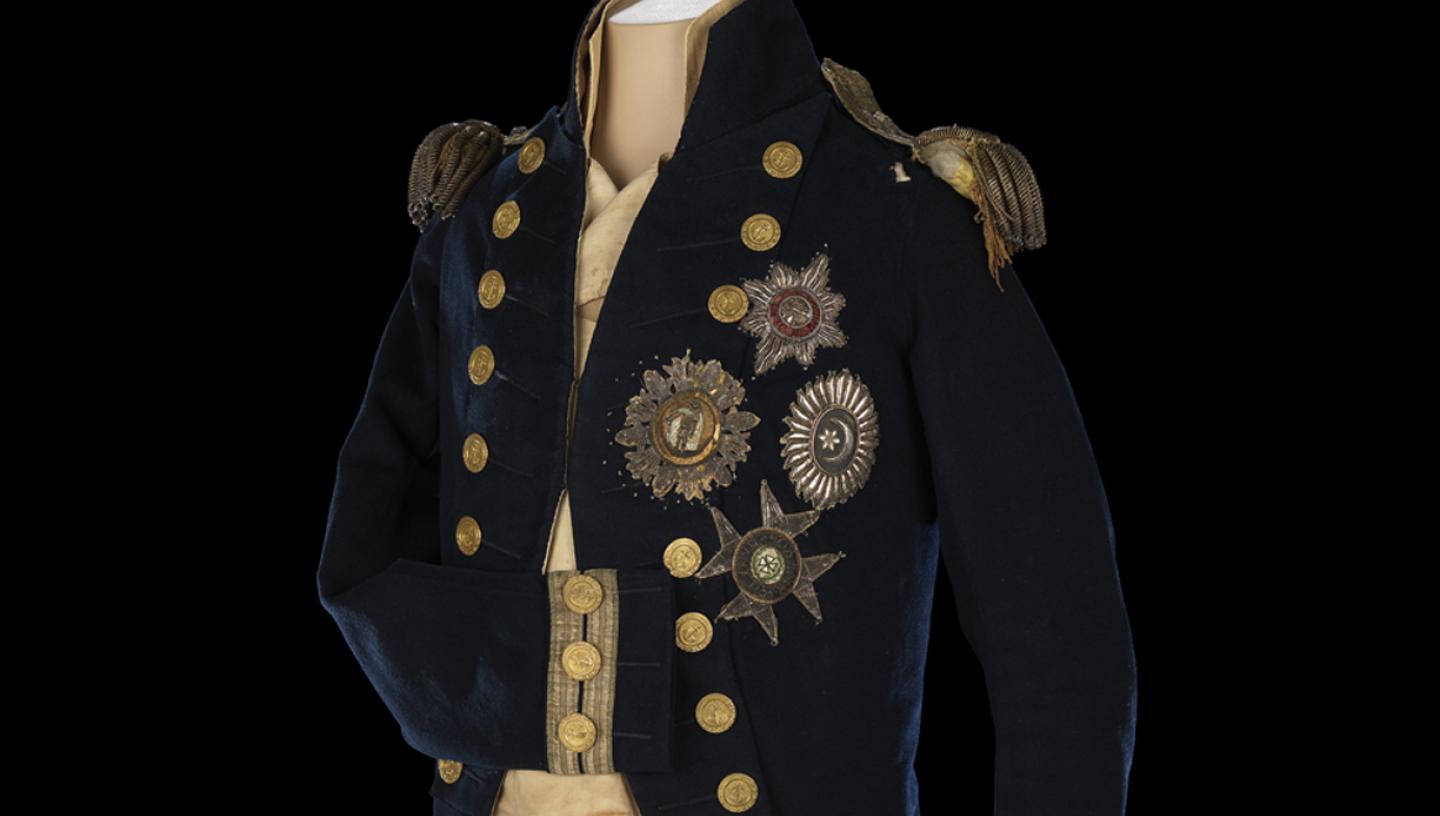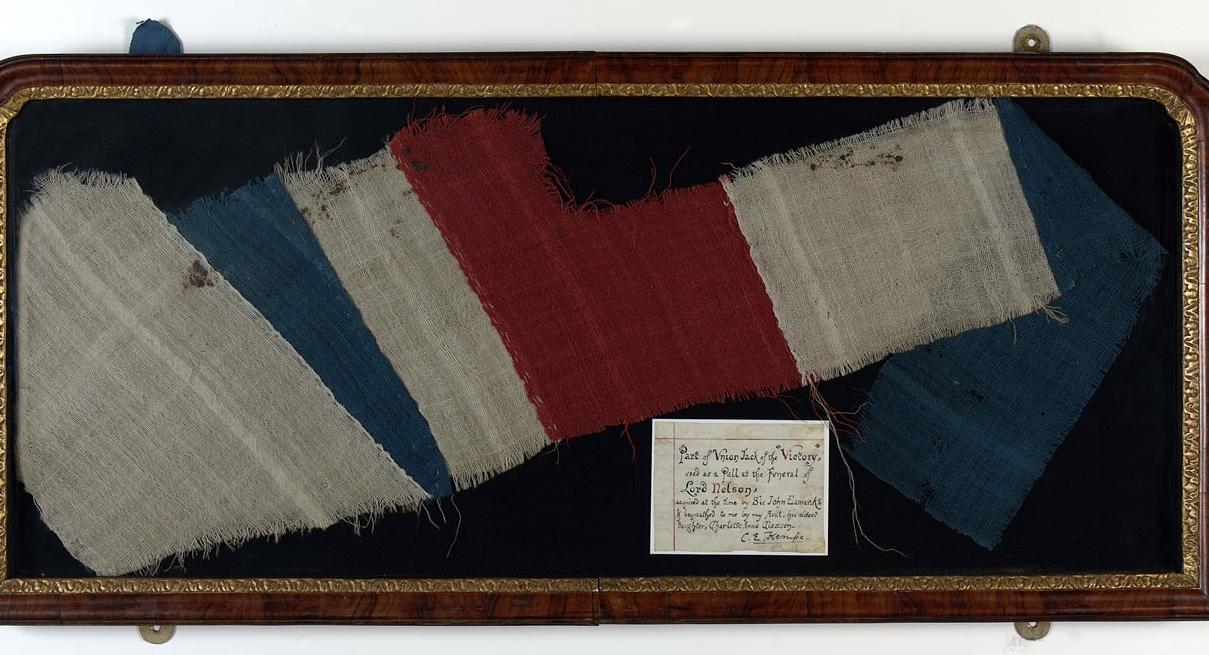The Battle of Trafalgar is one of the most famous naval battles in British history. Nelson led Britain to victory over a combined French and Spanish fleet, but was shot and died during the battle.
Find out more: the Battle of Trafalgar with Dan and Peter Snow
When and where was the Battle of Trafalgar?
The Battle of Trafalgar took place on 21 October 1805 during the Napoleonic War (1803–1815), as Napoleon Bonaparte and his armies tried to conquer Europe. Vice-Admiral Lord Nelson, commanding the British fleet, devised an ambitious plan of attack, which involved ambushing the Franco-Spanish fleet off the Cape of Trafalgar, in south-west Spain. His attack was to prove a decisive victory for the British.
Discover more about the build-up to the battle
When did the Battle of Trafalgar start?
At 6am on 21 October 1805, the two fleets sighted each other and at 6.40am Nelson gave the order to ‘prepare for battle’. The French were sailing in line off Cape Trafalgar, while the British came in from the west, gradually forming two lines. The British fleet was outnumbered, the enemy totalling nearly 30,000 men and 2632 guns to Nelson’s 18,000 men and 2148 guns.
At 11.45am, Nelson ordered a special signal to be flown from his flagship Victory. It read: ‘England expects that every man will do his duty’. The signal was greeted with delight by the fleet.
Finally, at 11.50am, French commander Pierre-Charles-Jean-Baptiste-Silvestre de Villeneuve sent the signal ‘engage the enemy’. The French vessel Fougueux fired the first shots at Vice-Admiral Cuthbert Collingwood’s flagship, Royal Sovereign. The battle had begun.

Nelson, Navy, Nation
What happened during the Battle of Trafalgar?
Collingwood was the first to reach the enemy line, firing a broadside into one of the Spanish flagships, Santa Anna. The ships in his division followed him, approaching in a slanting line, spreading the force of the impact and enveloping the allied rear as Nelson had intended.
Nelson meanwhile headed towards the great Spanish ship, Santissima Trinidad, but spotting that Villeneuve was flying his flag on the Bucentaure, the next ship astern, he ordered Flag Captain Thomas Hardy to attack her first. The Victory passed under the stern, firing a broadside as she went, giving the Bucentaure a knockout blow.
As the Victory moved on she became entangled in the Redoutable, and the two ships drifted away. This created a large gap in the Franco-Spanish line through which Nelson’s division then poured, splitting the enemy fleet in two – again, exactly as Nelson intended.
The battle developed into a ferocious pounding match but the British had the advantage thanks to Nelson’s strategic pre-planning and the fact his men were better trained in delivering rapid, accurate gunnery. When firing finally ceased at 5.30pm, 17 enemy ships had been captured and another was a blazing wreck. Four managed to escape but were captured a few weeks later, and 11 managed to struggle back to Cadiz.
A total of 449 British sailors were killed and 1217 wounded. French and Spanish losses were heavier: 4408 were dead, 2545 wounded and some 20,000 taken prisoner.
What happened after the Battle of Trafalgar?
Britain’s decisive victory was overshadowed by news of the death of Nelson, who was shot onboard Victory at 1.15pm and died at 4.30pm. The triumph was further eclipsed by a fierce storm that raged after the battle, forcing the British to abandon most of their captured enemy ships.
News of Trafalgar reached London a fortnight later in the early hours of 6 November 1805. Public rejoicing for the victory was muted by widespread sorrow for the death of Nelson. As a reward for Trafalgar, Collingwood was made a baron, all the captains received the official Naval Gold Medal and a special grant of money was made by the government to all those who had taken part. This was to compensate them for the prize money they lost when their captured vessels sank in the storm.
The Battle of Trafalgar cemented Britain’s reputation as ruler of the seas and demonstrated that the Royal Navy had superiority in training, professionalism and expertise in naval tactics that set it apart from its rivals. By 1809, there were over 140,000 men serving on 732 ships, more than ever before.
However, the victory at Trafalgar had little overall impact on the course of the war. Six weeks afterwards, Napoleon went on to confirm his ascendancy over Europe with a decisive victory over Austria and Russia at Austerlitz.



